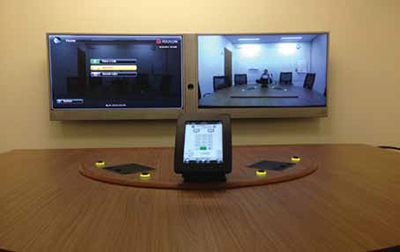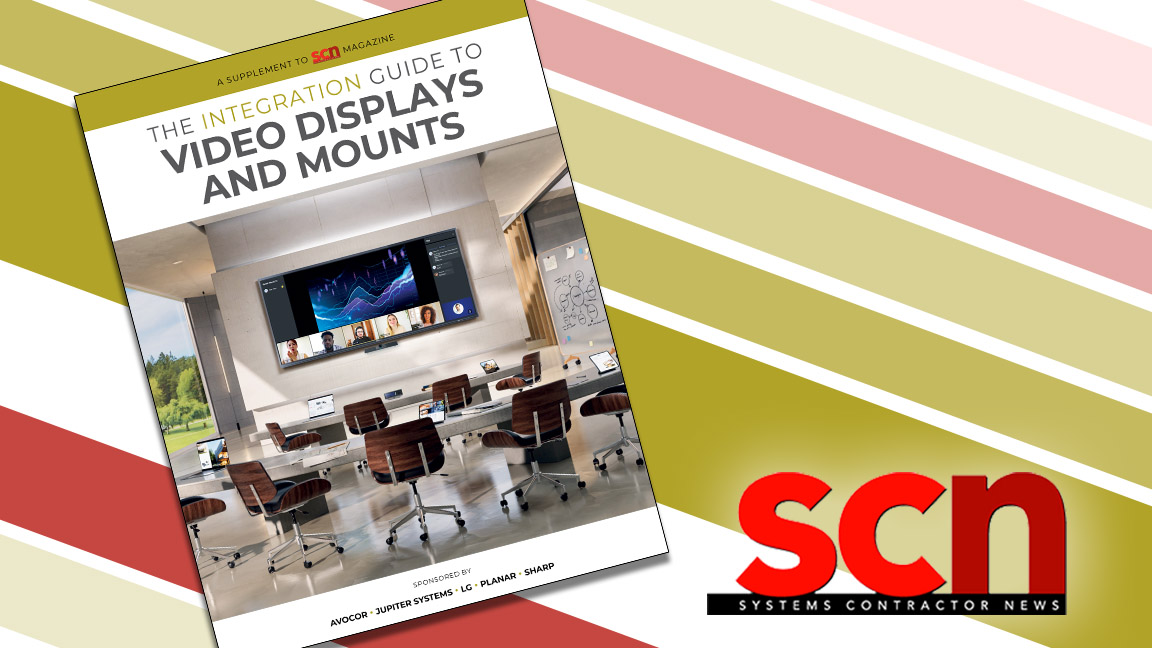To Rein in Cost, One Consultant Banked Heavily on Ingenuity

Prepare for new paradigms. That’s the watchword more than ever in AV, and it’s a philosophy that helped an alert AV consultant recognize a game-changing project when it crossed his desk.
The new campus features more than 350 conference rooms, multiple video walls, and an executive briefing center.The journey to an evolved design—one where cloud-based systems take on unprecedented levels of functionality—began in Q3 of 2011 for the San Francisco, CA-based AV consultant firm Charles. M. Salter Associates (CSA). That’s when VP Joey D’Angelo and a CSA team that included Paul Billings, Joshua Harrison, Elisabeth Kelson, and Dylan Mills were asked to consult on a new campus that was being built for a large Silicon Valley networking company, one which would feature more than 350 conference rooms, multiple video walls, and an executive briefing center.
Its scope was ambitious, but the project was also spiraling out of control in terms of cost and complexity, while still failing to meet the basic goals and expectations of the company’s CTO. “Despite receiving the best practices and best systems possible from their previous integrations,” said D’Angelo, “this networking company was unhappy with the status quo of the AV industry. For this new campus, they wanted to drive down prices, increase quality, and also increase the overall user experience.”
CSA, working closely with integrator AVI-SPL throughout the project, was taking on a tall order. Among the client’s top priorities were that the expansive campus offer simplified systems, with no more than three button pushes to presenting. As well it had to provide a unique videoconferencing experience—one that offered an immersive feel, for 1/10th the cost of telepresence-style systems.
To cut video teleconferencing costs and complexity, D’Angelo and his team first honed in on the traditional set up of two displays and multiple inputs, which required a costly proprietary matrix switcher. Instead of that typical system, CSA began to imagine a workflow where all the routing was fully networked, controlled completely through the network with iPads as the front end, on an architecture that could be applied campus-wide for a cost of less than half the original budget.
The gestalt that allowed the design team to take things in a new direction came when D’Angelo remembered a demo he’d seen for the SVSi Networked AV digital media distribution and switching system that had originally been presented to him as a digital signage solution. But with the SVSi encoders’ ability to encode and distribute sources of almost any format onto an existing IP network, and then make that stream available to any endpoint in the facility by means of the SVSi’s decoders, D’Angelo realized CSA could use them for something much bigger than just signage.
With SVSi’s technology at the heart of the system, the CSA team now had a platform that allowed them to not only distribute AV anywhere on the network, but to share essential hardware devices via the cloud. “Instead of using a switcher, this approach uses standard networking protocols and hardware to do all of the control and routing of the media in the system,” D’Angelo said. “This way, you can share devices between meeting spaces. For example, instead of putting a codec or an echo canceler in a rack within a conference room, you can put one in the central location—and just use the network to virtually teleport the box into the room where it’s needed, and it’s there.”
A daily selection of the top stories for AV integrators, resellers and consultants. Sign up below.
Myriad efficiencies unfolded from there. No IR, RS-232, or contact closures whatsoever are required in the system—the entire control system is networked, meaning D’Angelo and his team could use a single processor to control multiple rooms. As a result, the entire campus requires only 80 or so processors controlling more than 360 individual systems. In addition, there are no matrix switchers anywhere on the campus, with the media from one laptop plugged into one room capable of being routed to every display on the campus or globally, for that matter.
“This is probably the world’s largest AV matrix, comprising upwards of 1,000 sources by 1,000 endpoints,” said D’Angelo. No proprietary cabling was required, nor was there any cable termination—all connectors and cables are off-the-shelf or plug-and-play.
With the heavy reliance on networking technology, network centric thinking had to be employed and typically foreign concepts such as load sharing and failover had to be incorporated into the system’s architecture.
David Weiss (www.dwords.com) writes extensively about AV, audio, and broadcast technology.
